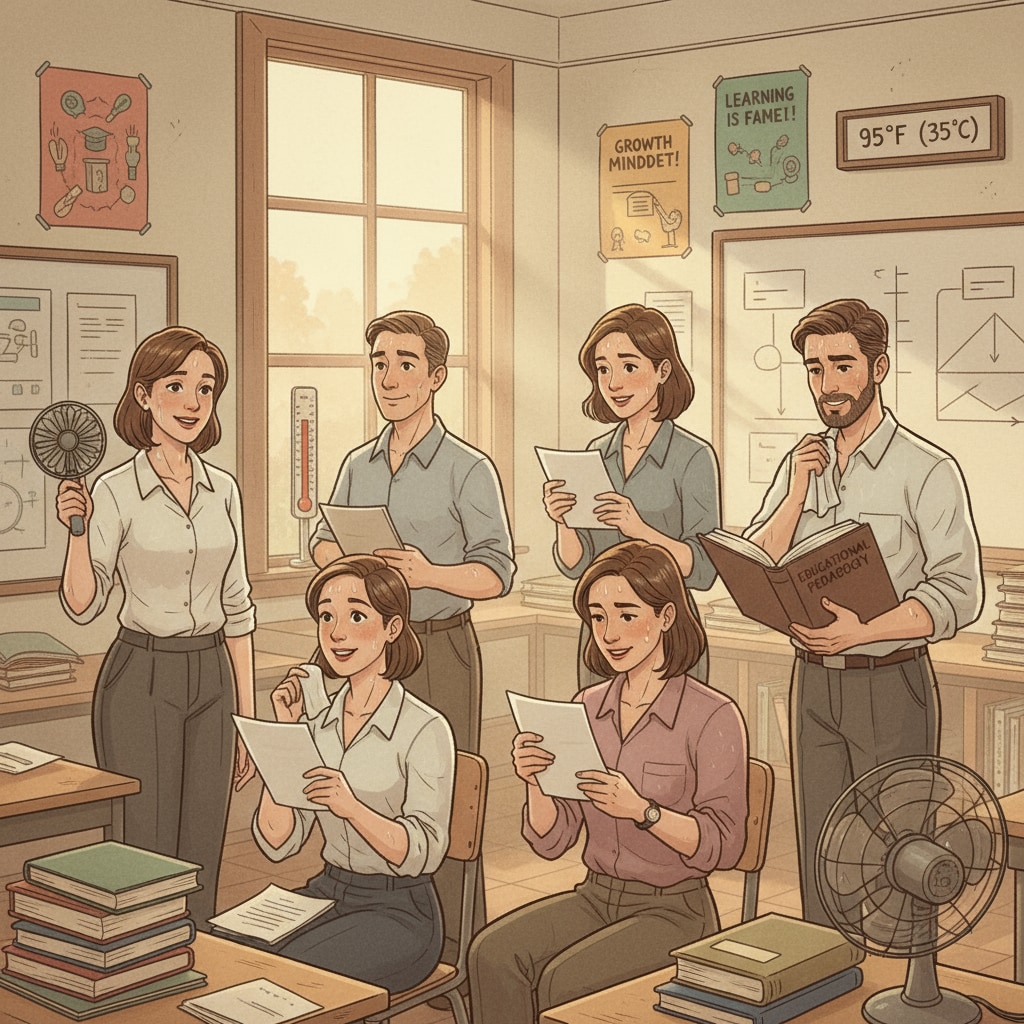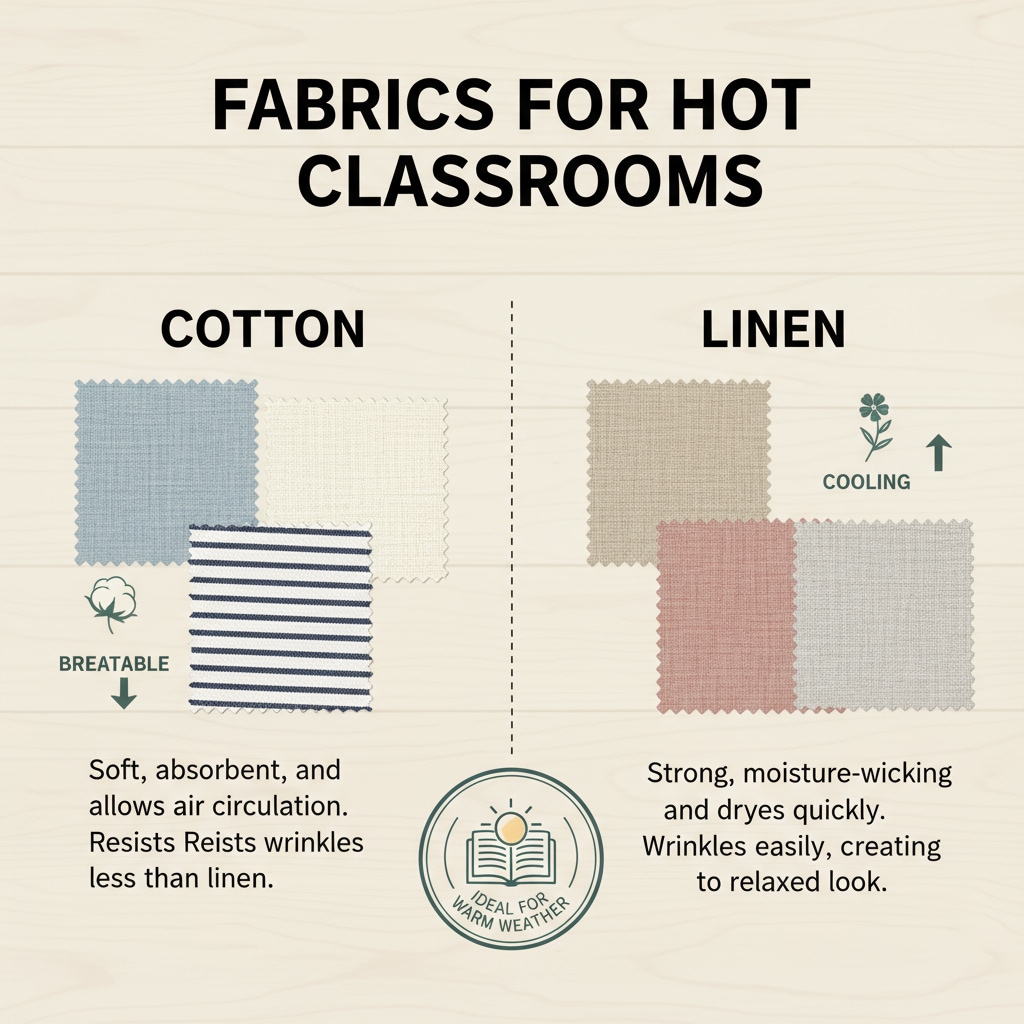In hot classrooms with no air conditioning, K12 teachers are constantly grappling with the dilemma of maintaining a professional appearance while staying comfortable. The sweltering heat can make it challenging to focus on teaching and interact effectively with students. However, with some careful considerations, teachers can make attire choices that meet both requirements.

Understanding the Challenges
Teaching in a hot classroom without air conditioning presents unique difficulties. The heat can cause sweating, which not only makes teachers feel uncomfortable but can also affect their professional image. Moreover, it’s easy to become fatigued in such an environment, making it harder to engage students. According to Education.com, the classroom environment significantly impacts both teachers’ and students’ performance. Teachers must find ways to combat these challenges through their clothing choices.
Fabric is Key
When choosing clothing for hot classrooms, the fabric is crucial. Opt for natural fibers like cotton and linen. Cotton is highly breathable and absorbs moisture, keeping you dry. Linen, on the other hand, is lightweight and has excellent heat dissipation properties. For example, a cotton blouse or a linen dress can be great options. Avoid synthetic materials such as polyester, which trap heat and moisture.

As Wikipedia’s Fabric page explains, different fabrics have distinct characteristics that affect comfort.
Another important aspect is color. Light-colored clothing reflects sunlight and heat, while dark colors absorb them. So, stick to light shades like pastels, whites, and light blues. This not only helps in staying cool but also gives a fresh and professional look.
Style and Function
Style is also a factor to consider. Keep the style simple and practical. Loose-fitting clothes allow air to circulate, reducing the feeling of stuffiness. A loose cotton shirt paired with a pair of lightweight trousers or a flowing linen skirt can be both stylish and comfortable. Avoid tight-fitting clothes that can restrict movement and trap heat.
For footwear, choose open-toe shoes or breathable sandals. This helps keep feet cool and reduces the chances of sweating. However, make sure they are still appropriate for a professional setting. For instance, a pair of elegant open-toe pumps or stylish sandals with a low heel can work well.
In addition to the main clothing items, accessories can also play a role. A lightweight scarf can add a touch of style while being used to wipe away sweat if needed. A wide-brimmed hat can be a great option when moving between classrooms or during outdoor activities, protecting from the sun.
Readability guidance: By understanding the challenges, choosing the right fabric, and considering style and function, K12 teachers can make the best clothing choices for hot classrooms without air conditioning. These choices will not only enhance their comfort but also maintain their professional presence in the educational environment.


